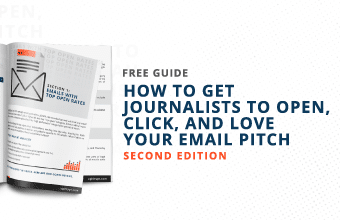Three things are now inevitable in life: death, taxes and shrinking budgets, and nowhere is this truer than in the PR space.
However, tight budgets don’t mean that you compromise on the quality of your work, and the same holds true for research. You don’t need to be Jordan Belfort to conduct effective research. Often, it’s the allocation of budget in the wrong places which takes it away from those that move the needle.
To avoid this, we’ve put together a checklist of 5 key questions to ask yourself before putting your research in the field. If you can tick everything off this list, you’re in a great position to perform some news-breaking, cost-effective research.
1. Am I asking the right people?
Seems like a no-brainer, right? But what a lot of people don’t realize is just how granular targeting can be.
For a simple consumer request, you won’t need to look further than “Nat Rep”, i.e. a sample that is representative of the population you are surveying. The fact that this sample has no special requirements means it can be extremely cost-effective to run projects on, without compromising data quality.
However, if it’s something more niche you’re looking for, always have the conversation with your research partner. For example, with the World Cup fresh in everyone’s minds, “football fans” are very much en vogue and can be easily targeted as such.
This not only saves money by only paying for the people you need to reach, it also provides the best stats with the least uncertainty.
2. Am I asking the right number of people?
To be seriously considered by the top publications, your data needs the credence that it’s representative, however there is certainly a point of diminishing returns.
Simply put, for consumer surveys, a sample of 1,000 respondents is sufficient to generate effective headlines, however, the more specific the sample gets, in B2B sectors for example, the less you will need to hammer your point home.
This ties in nicely with the previous point: effective targeting allows you to reach the exact people you need, meaning you don’t have the cost of wasted incentives, associated with a “scattergun” approach.
3. Am I asking the right questions?
This is the bread and butter of effective research and, ultimately, the lynchpin for your story. There are three things to bear in mind here:
- Closed questions always generate the best stats. Open-ended questions give the recipient too much leeway to distort the statistics. Closed questions create quantitative results which, ultimately make the snappiest statistics.
- If questions are well-worded, you’ll need less of them. Since long questionnaires cost more, this is a cut and dry way to reduce costs. Stick to a max of 20 questions, and audit those you do ask for what they add to your story. Be precise, be concise.
- Use your data partner’s expertise, they will see hundreds of questionnaires. Be sure to brief them on your overall objectives, including where you want it to be published.
4. What do I want the data to look like?
As a rule, always look at demographic elements like gender, region and age to spot patterns. This can be a great tool for both regional and national press.
A good data partner will be able to highlight any data anomalies which would make for good stories. Furthermore, don’t be afraid to ask them to split the data in a different way. It’s a simple change to make, so don’t feel locked in, it could make the difference in the story produced.
5. Am I sacrificing time or quality to get a lower cost?
If the answer’s yes, then something needs to change. Ultimately, this could mean shopping around for partners. An agency with a suite of expertise and technology available in house can usually offer you a better deal.
There are certain things to look out for if this is the case: do they use proprietary software? Do they have specialist scripters in-house? Do they operate their own access panels? All these factors translate to time and money savings for a data partner which, in turn, means they can pass those savings on to you and your clients.
All in all, conducting effective research on a tight budget is underpinned by two key principals.
Firstly, a structured approach to research methodology, including a thorough understanding of what you need to achieve and what it takes to get there, is vital.
Secondly, choosing the right data partner for your needs. Their unique access to both technology and audience coupled with their industry experience should enable them to advise how you should, and most importantly, how you should not, spend your budget.








